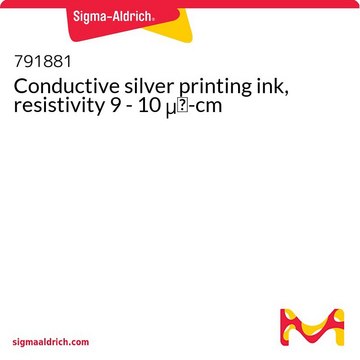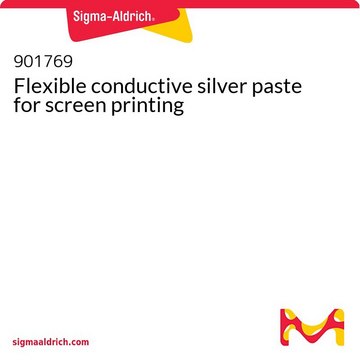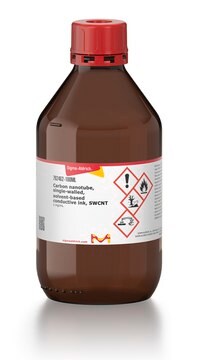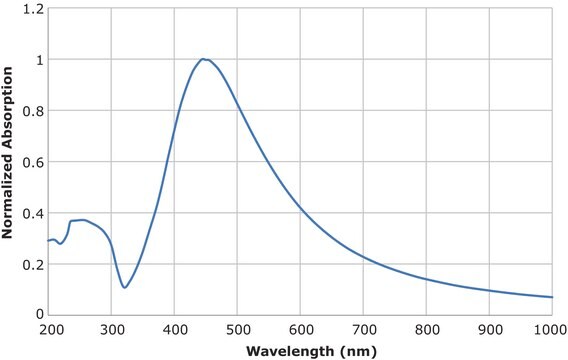901879
SunTronic® conductive silver ink for screen printing
Synonim(y):
Ag ink, SunTronic® AST6025, conductive ink, silver ink
About This Item
Polecane produkty
opis
Sheet resistivity: <0.010 Ω/sq/mil (150°C/10 min)
Solid content: 82-85% (120 °C)
Volume resistivity: <2.5x10-5 Ω.cm (150°C/30 min)
Formularz
liquid
lepkość
45-55 Pa.s
temp. przechowywania
2-8°C
Opis ogólny
The ink exhibits high viscosity, low slumping, excellent conductivity and environmental stability, and adhesion to various substrates, including glass, various metals, PET, and transparent conductive films.
AST6025 is specifically suitable for printing of fine interconnects, printed RF antennae, and bus bars for touch panels.
Przestroga
Typical drying temperature may range from 120-200°C (248-392°F) depending on temperature tolerance of the substrate.Drying time may range from 2-30 minutes.Higher drying temperature and/or longer drying times will result in better electrical performance, adhesion and mechanical properties.
Optimum drying conditions should be established for particular equipment used by the customer.
AST6025 is supplied as ready-to-use ink. It should be stirred well prior to printing. AST6025 is suitable for use on hand, semi-automatic or fully automatic screen printing machines.
Typically, polyester or stainless screens with mesh count 325-430 threads/inch can be used depending on desired ink film thickness and resolution. For fine lines between 100 - 250 microns nominal line width, stainless screen mesh is preferred with mesh count between 325-400 threads/inch. For <100 microns line widths, 430 and higher stainless steel mesh counts are recommended.
Informacje prawne
Hasło ostrzegawcze
Danger
Zwroty wskazujące rodzaj zagrożenia
Zwroty wskazujące środki ostrożności
Klasyfikacja zagrożeń
Aquatic Acute 1 - Aquatic Chronic 1 - Carc. 2 - Eye Dam. 1
Kod klasy składowania
10 - Combustible liquids
Klasa zagrożenia wodnego (WGK)
WGK 3
Temperatura zapłonu (°F)
212.0 °F
Temperatura zapłonu (°C)
100 °C
Wybierz jedną z najnowszych wersji:
Certyfikaty analizy (CoA)
Nie widzisz odpowiedniej wersji?
Jeśli potrzebujesz konkretnej wersji, możesz wyszukać konkretny certyfikat według numeru partii lub serii.
Masz już ten produkt?
Dokumenty związane z niedawno zakupionymi produktami zostały zamieszczone w Bibliotece dokumentów.
Klienci oglądali również te produkty
Produkty
Professor Tokito and Professor Takeda share their new materials, device architecture design principles, and performance optimization protocols for printed and solution-processed, low-cost, highly flexible, organic electronic devices.
Nasz zespół naukowców ma doświadczenie we wszystkich obszarach badań, w tym w naukach przyrodniczych, materiałoznawstwie, syntezie chemicznej, chromatografii, analityce i wielu innych dziedzinach.
Skontaktuj się z zespołem ds. pomocy technicznej












